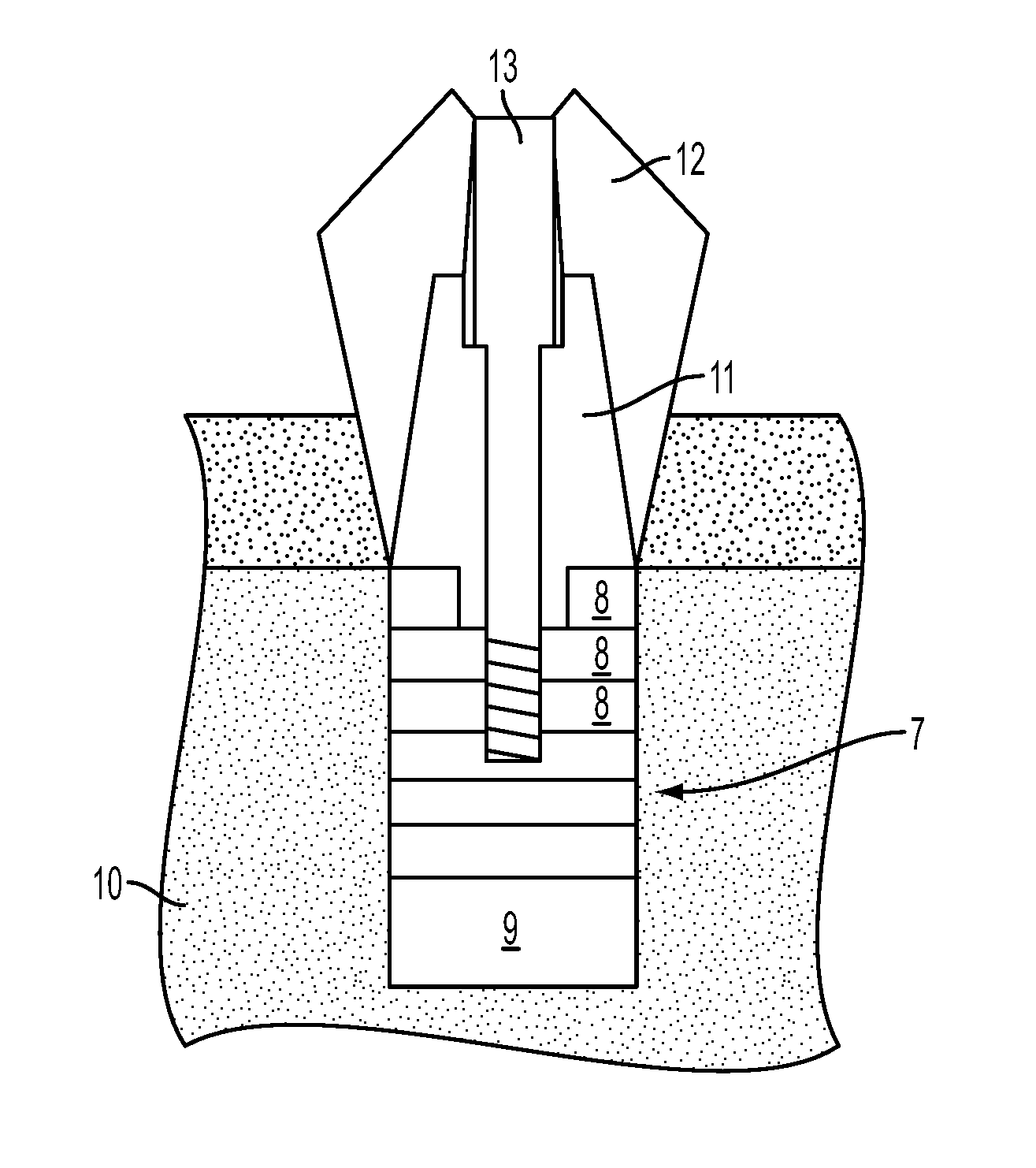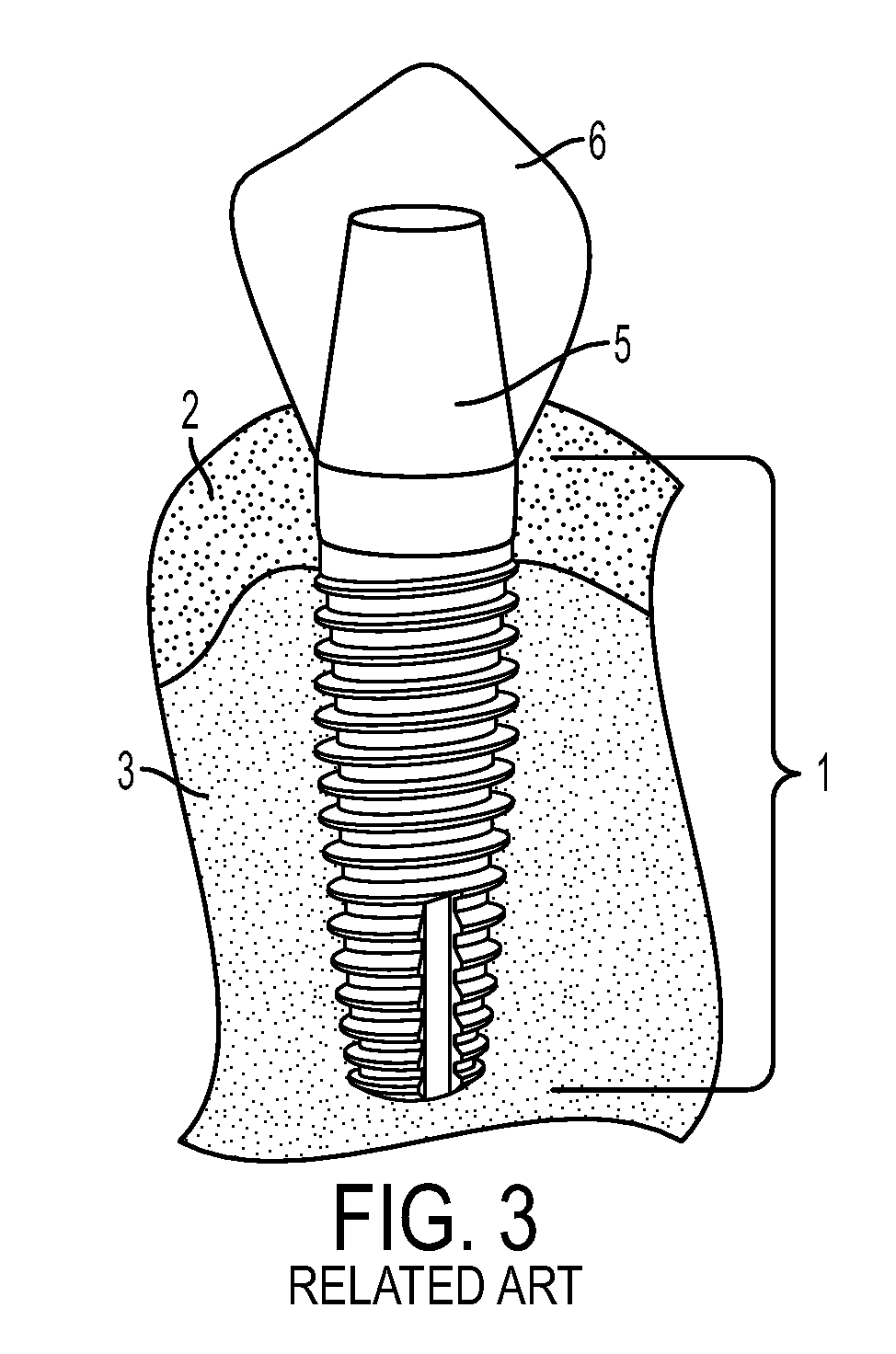System and method for prevention and treatment of peri-implant infection
a technology for peri-implant infection and system and method, applied in the field of system and method for preventing and treating peri-implant infection, can solve the problems of loss of implant, few viable treatment options for this problem, and mediated inflammatory process likely increases the risk of other systemic diseases
- Summary
- Abstract
- Description
- Claims
- Application Information
AI Technical Summary
Benefits of technology
Problems solved by technology
Method used
Image
Examples
Embodiment Construction
[0050]The following description of the illustrative, non-limiting embodiments discloses specific configurations, components, and processes. However, the embodiments are merely examples of the present invention, and thus, the specific features described below are merely used to more easily describe such embodiments and to provide an overall understanding of the present invention. Accordingly, one skilled in the art will readily recognize that the present invention is not limited to the specific embodiments described below. Furthermore, the descriptions of various configurations, components, and processes of the embodiments that would have been known to one skilled in the art are omitted for the sake of clarity and brevity.
[0051]A non-limiting embodiment of an implant fixture is shown in FIG. 4. The implant fixture 7 is segmented to include segment sections 8 and a base 9. Also, an abutment 11 is provided on the segments 8 and a final restoration or crown 12 is screwed thereto via scr...
PUM
| Property | Measurement | Unit |
|---|---|---|
| length | aaaaa | aaaaa |
| length | aaaaa | aaaaa |
| length | aaaaa | aaaaa |
Abstract
Description
Claims
Application Information
 Login to View More
Login to View More - R&D
- Intellectual Property
- Life Sciences
- Materials
- Tech Scout
- Unparalleled Data Quality
- Higher Quality Content
- 60% Fewer Hallucinations
Browse by: Latest US Patents, China's latest patents, Technical Efficacy Thesaurus, Application Domain, Technology Topic, Popular Technical Reports.
© 2025 PatSnap. All rights reserved.Legal|Privacy policy|Modern Slavery Act Transparency Statement|Sitemap|About US| Contact US: help@patsnap.com



